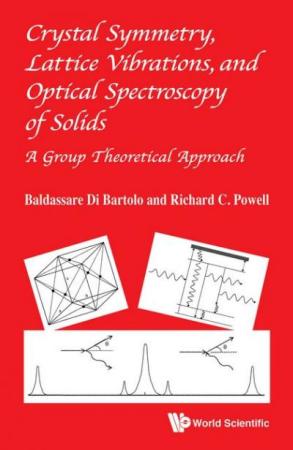Aug 5 2014
Modern technology is based heavily on solid state devices such as semiconductors and lasers.
 This is the cover of 'Crystal Symmetry, Lattice Vibrations, and Optical Spectroscopy of Solids'. Credit: World Scientific, 2014
This is the cover of 'Crystal Symmetry, Lattice Vibrations, and Optical Spectroscopy of Solids'. Credit: World Scientific, 2014
It is important for future development to have an understanding of the basic physics underlying these types of devices. In their latest book "Crystal Symmetry, Lattice Vibrations, and Optical Spectroscopy of Solids A Group Theoretical Approach" published with World Scientific, authors Baldassare Di Bartolo (Boston College, USA), Richard C Powell (University of Arizona, USA) present a unique approach to the basic concepts of solid state physics.
The fundamental properties of solids depend critically on how the atomic constituents of the material are arranged and on their motion about their equilibrium positions. This book describes the basic theoretical physics concepts relevant to the description of atomic positions in solids and experimental techniques used to measure the positions of atoms and their motions in solids. An example is given as to the relevence of this information to the development of solid state lasers.
The book is divided into three parts. The first part focuses on the symmetry of crystal structures. The basic concepts of group theory are reviewed and applied to the treatment of spacial symmetries.
The second part of the book deals with the lattice vibrations of crystals. Again group theory plays an important role in describing different types of lattice vibrations. The thermodynamics of lattice vibrations is described as well as the experimental measurements of lattice vibrations by neutron scattering and optical techniques.
In the third section of the book the optical spectroscopy of crystals is described with a special emphasis on the effects of lattice symmetry and vibrations on the spectroscopic properties. The important application of these concepts to solid state lasers is summarized in the final chapter. This ties together how crystal symmetry, lattice vibrations, and optical spectroscopic properties determine the operational parameters of a laser.
It can be used as a textbook for advanced courses in solid state physics and an important reference book for researchers in the field.